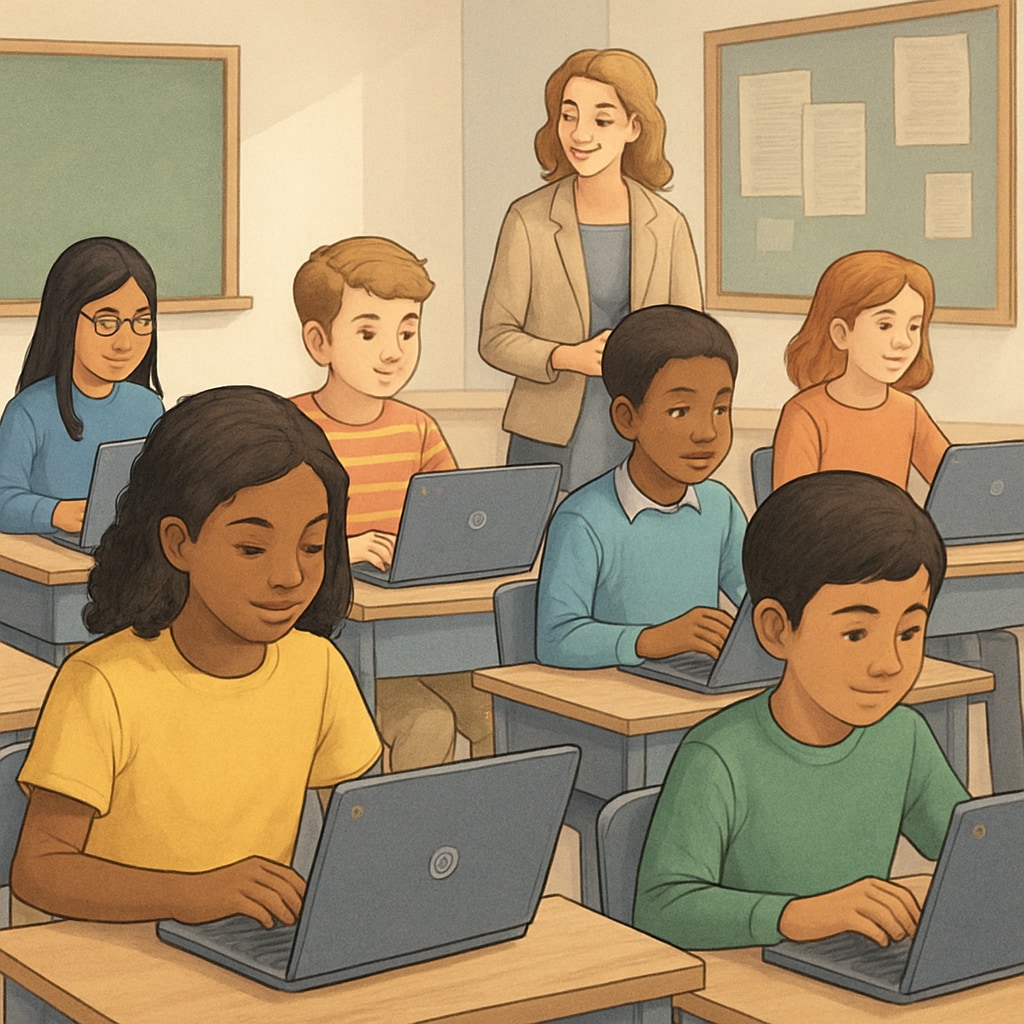In modern K-12 classrooms, education technology (EdTech) has become a cornerstone of learning. Devices like Chromebooks, interactive whiteboards, and digital tools promise increased efficiency and engagement. However, this shift raises a pressing question: is the emphasis on digital efficiency inadvertently undermining the development of critical thinking skills? While EdTech can streamline tasks, it is essential to examine its impact on the deeper goals of education.
Efficiency in the Digital Classroom: A Double-Edged Sword
EdTech tools like Chromebooks are celebrated for their ability to make learning more efficient. Students can access information instantly, complete assignments online, and collaborate through digital platforms. For teachers, grading and lesson planning are simplified with automation. This increased efficiency saves time and allows classrooms to cover more material.
However, this focus on speed and convenience can sometimes substitute for thoughtful engagement. For example, when students rely on search engines to answer questions, they often bypass the critical process of evaluating sources or forming their own interpretations. Over time, this may lead to a surface-level understanding of topics rather than the in-depth analysis required for critical thinking.

What Is Critical Thinking, and Why Does It Matter?
Critical thinking involves analyzing, evaluating, and synthesizing information to form reasoned judgments. It is a skill that transcends rote memorization, enabling students to navigate complex problems and make informed decisions. In a world increasingly dominated by misinformation, developing critical thinking is more important than ever.
Unfortunately, many EdTech solutions focus on delivering pre-packaged answers rather than encouraging inquiry. For example, multiple-choice quizzes and auto-grading systems prioritize correct answers over the reasoning process. While these tools are efficient, they may not push students to question assumptions or explore alternative perspectives.
Can EdTech and Critical Thinking Coexist?
Achieving a balance between efficiency and critical thinking requires thoughtful integration of technology. Here are some strategies to ensure that EdTech supports, rather than hinders, deeper learning:
- Encourage Inquiry-Based Learning: Use EdTech to pose open-ended questions and allow students to explore various solutions. Platforms like Google Classroom can facilitate discussions that promote critical thinking.
- Teach Digital Literacy: Incorporate lessons on evaluating online sources, recognizing bias, and verifying facts. This ensures students use technology thoughtfully.
- Blend Technology with Traditional Methods: Combine digital tools with face-to-face debates, essays, and hands-on projects to foster analytical skills.
- Leverage Adaptive Learning Tools: Some EdTech platforms, such as Khan Academy, adapt to individual learning needs, encouraging students to tackle challenges at their own pace.
When implemented thoughtfully, EdTech can be a powerful ally in fostering critical thinking. However, it requires educators to move beyond the allure of convenience and prioritize the cognitive development of their students.

Rethinking EdTech’s Role in Education
As schools continue to adopt devices like Chromebooks, it is vital to reflect on their purpose. Are these tools being used to enhance learning or merely to expedite administrative tasks? Educators must critically assess whether technology aligns with the broader goals of education, including the cultivation of curiosity, creativity, and critical thinking.
Ultimately, the goal should not be to reject EdTech but to use it as a complement to traditional teaching methods. By prioritizing thoughtful integration and creating opportunities for deeper engagement, schools can ensure that technology serves as a tool for meaningful learning rather than a shortcut to superficial outcomes.
In conclusion, while EdTech offers numerous benefits, its implementation must be guided by a commitment to nurturing critical thinking. By finding the right balance, educators can prepare students not only for academic success but also for the challenges of the modern world.


